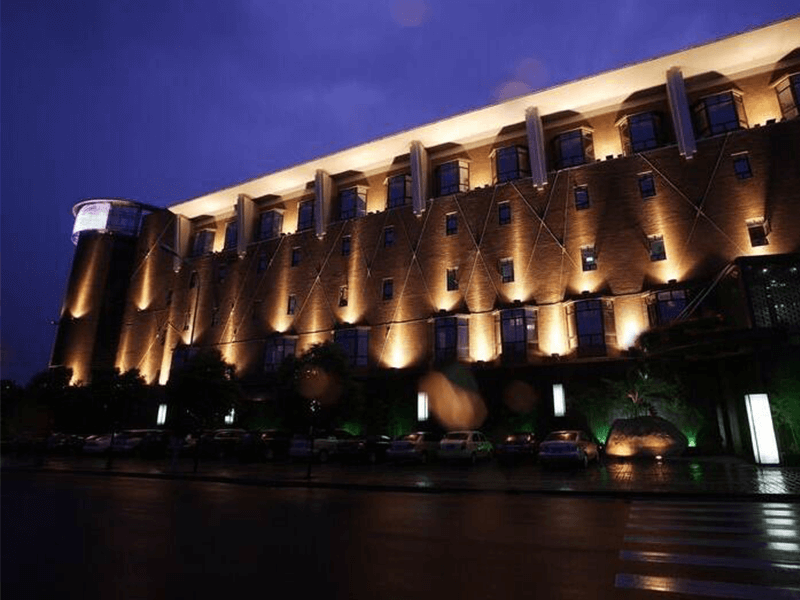Shadow play in facade lighting transcends traditional illumination. It introduces an element of storytelling, cultural resonance, and artistic expression to architecture. By manipulating light and shadow to add depth and dimension, architects and designers breathe vitality into their designs, engaging viewers in a dynamic and ever-evolving visual narrative. This technique enriches the built environment, fostering a deeper connection between people and the architectural spaces they inhabit.
Overview of Shadow Play in Facade Lighting:
Shadow play, a captivating facet of facade lighting and architectural illumination, is an artistic endeavor that centers around manipulating light and shadow to create depth, dimension, and dramatic visual effects on building surfaces. It involves strategically placing light fixtures to cast intricate, dynamic shadows that interact with architectural elements. Shadow play in facade lighting transforms static buildings into vibrant canvases, engaging viewers’ imaginations and emotions through its play of light and dark.
Manipulating Light and Shadow to Add Depth and Dimension:
At its core, shadow play is about introducing a new layer of storytelling to architectural designs. By carefully positioning light sources, designers can cast shadows highlighting the nuances of a building’s structure, surfaces, and details. The interplay between light and shadow enhances depth, adding layers of complexity that evolve with changing angles and the passage of time.
This technique fosters a sense of movement and fluidity in architecture. The shifting shadows create an ever-changing visual experience, inviting viewers to explore the building from various perspectives. It adds an element of surprise as shadows reveal hidden details and create optical illusions, such as the appearance of texture or patterns that may not exist on the physical surface. In essence, shadow play breathes life into architecture, making it a dynamic, living entity.
Cultural and Artistic Connections of Shadow Play in Architecture:
Shadow play has deep cultural and artistic roots that extend beyond the realm of facade lighting. It draws inspiration from the ancient art of shadow puppetry, a traditional form of storytelling in many cultures. Shadow puppetry uses cut-out figures manipulated between a light source and a screen to create intricate narratives. Similarly, shadow play utilizes light as a storyteller in architecture, transforming buildings into living narratives.
Many architectural masterpieces have employed shadow play to evoke emotions and tell stories. For instance, Gothic cathedrals utilized intricate tracery and stained glass to cast colorful and dramatic shadows that added a spiritual dimension to the architecture. In contemporary architecture, renowned architects like Frank Gehry have embraced shadow play to enhance the sculptural qualities of their designs.
Culturally, shadow play has symbolic significance in various societies. In some cultures, shadows represent the transient nature of life, while in others, they evoke mystery and intrigue. Harnessing these cultural and artistic connections, shadow play in architecture adds aesthetic value and creates a shared cultural experience.
A range of lighting choices is available for this application, encompassing outdoor floodlight fixtures, palm tree ring lights, landscape spotlights, and adjustable led underground lights.
